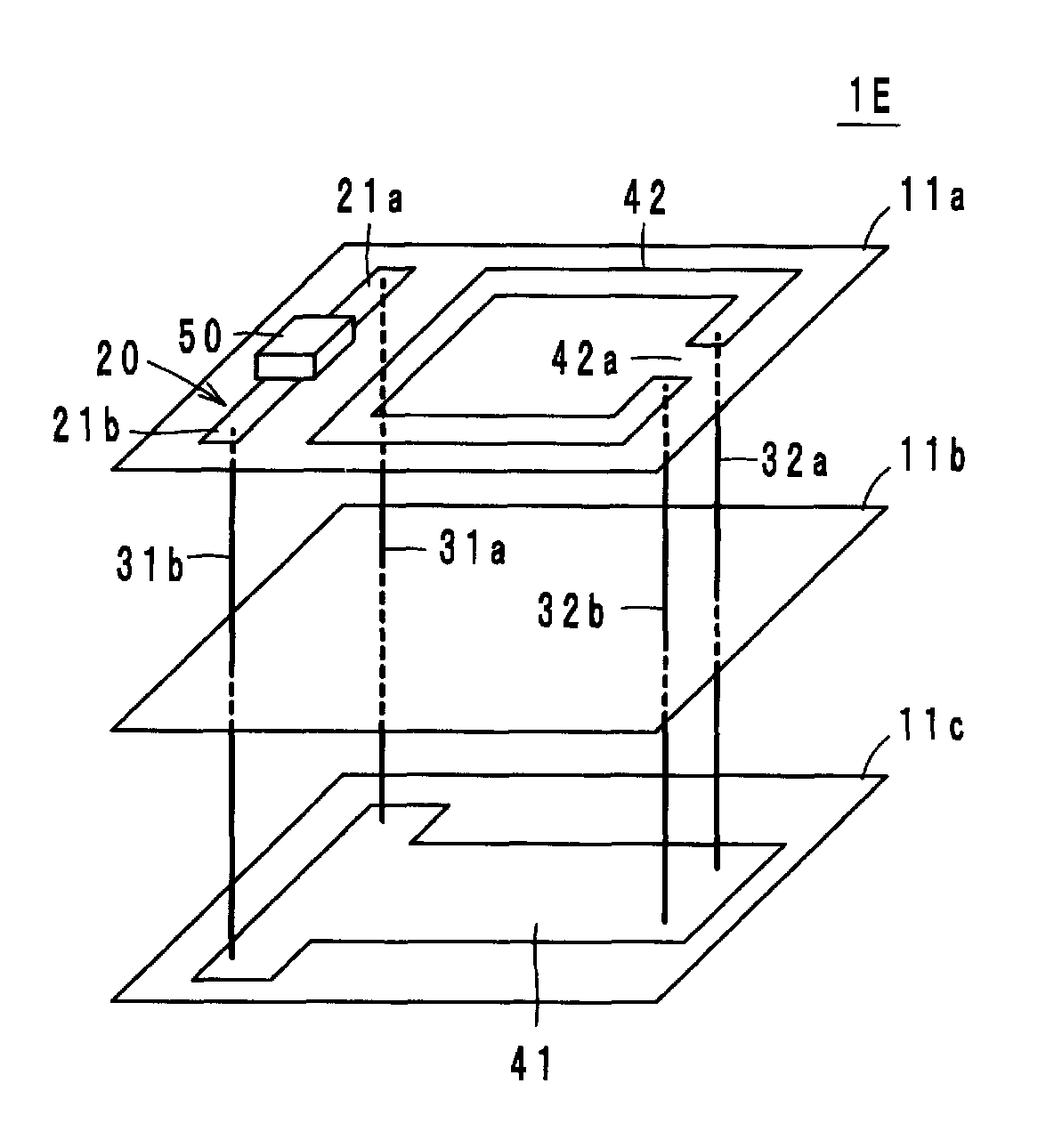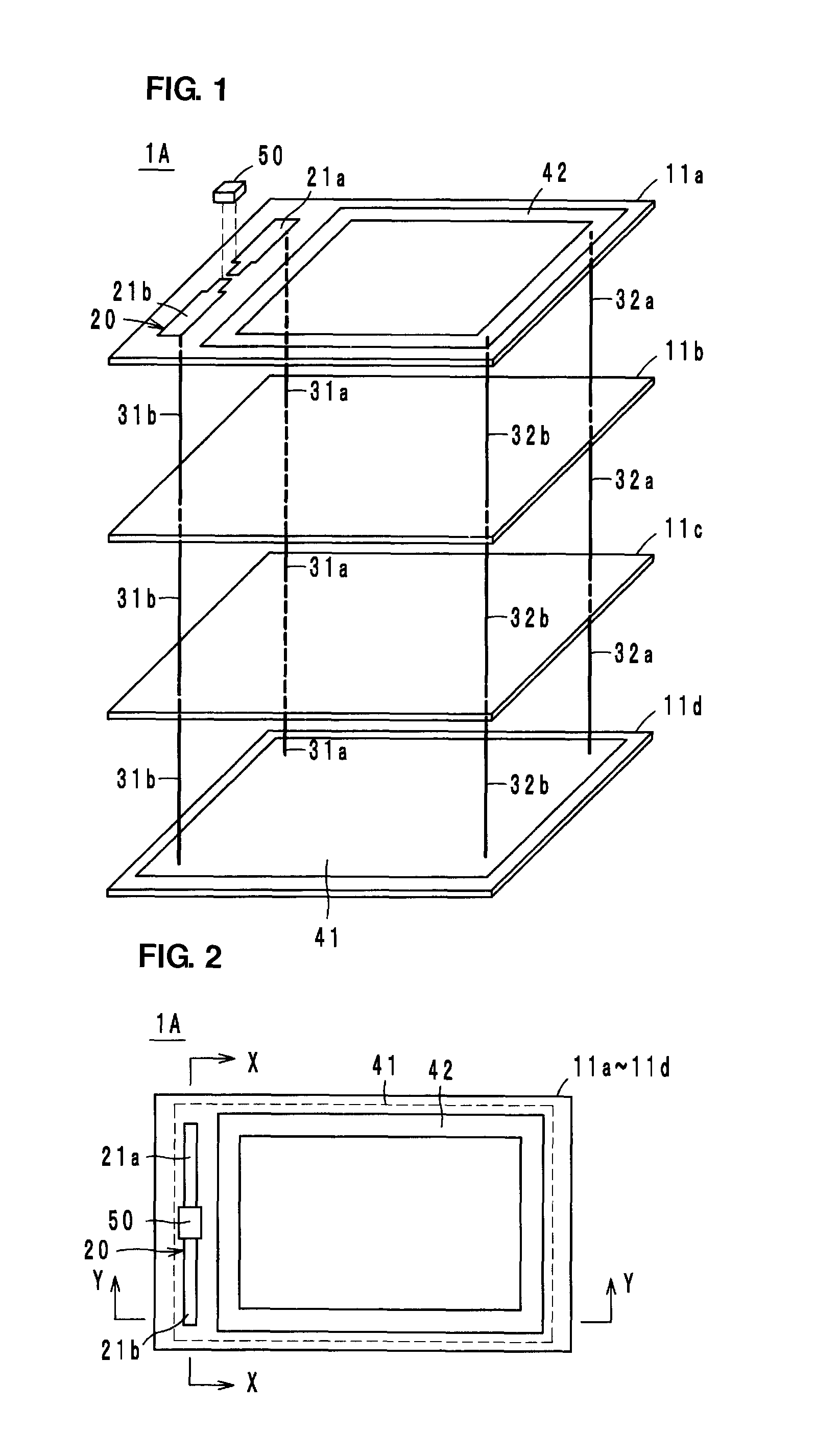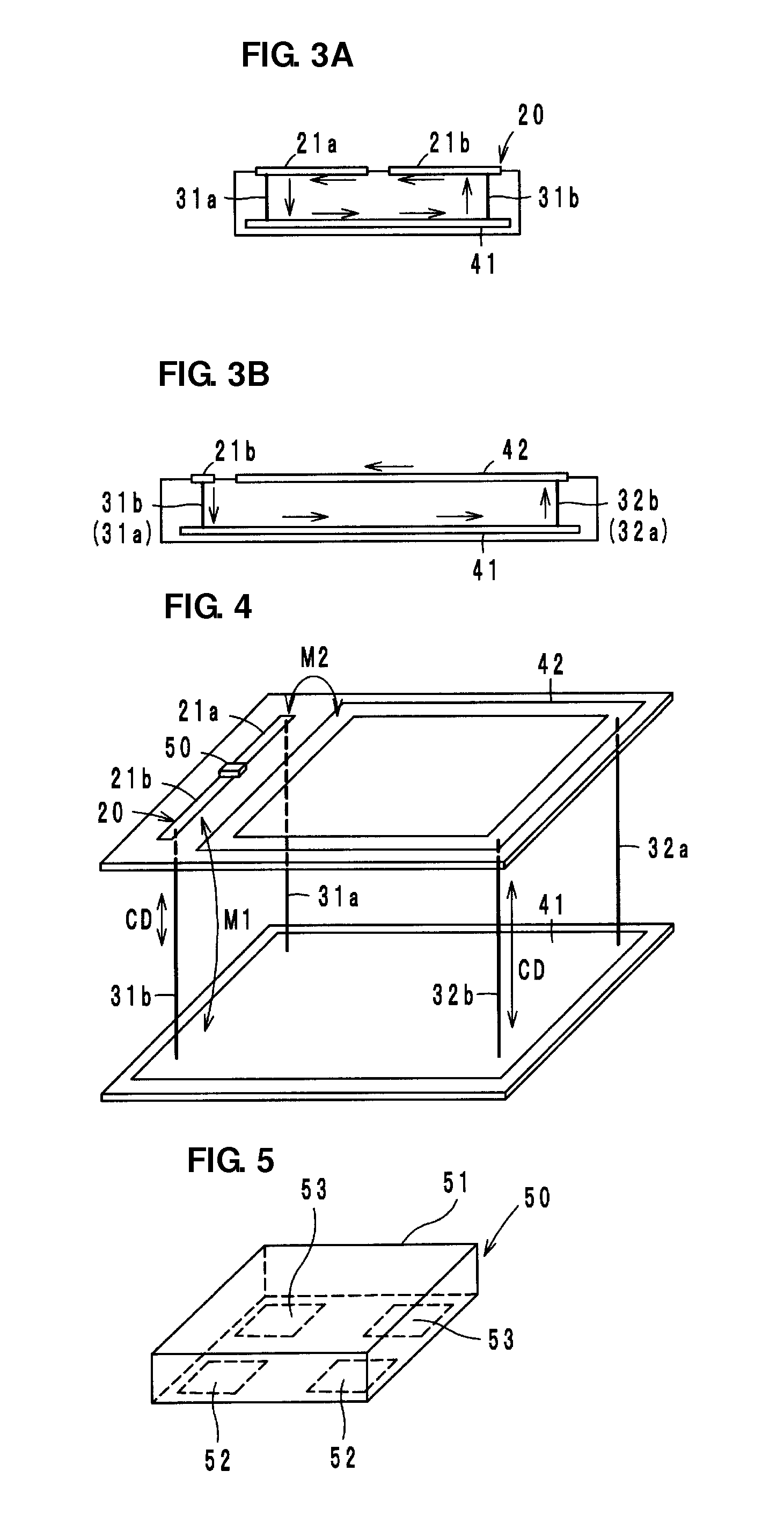Wireless IC device
a wireless ic and wire-based technology, applied in the direction of semiconductor/solid-state device details, printed circuit non-printed electric components association, instruments, etc., can solve the problems of increasing the size of the printed wiring board itself and the inability to obtain radiation gain toward the surface layer in some cases, so as to prevent a reduction in radiation gain, improve the gain of high-frequency signal radiated from the first and second radiators, and efficient supply
- Summary
- Abstract
- Description
- Claims
- Application Information
AI Technical Summary
Benefits of technology
Problems solved by technology
Method used
Image
Examples
first preferred embodiment
[0033]As illustrated in FIGS. 1 and 2, a wireless IC device 1A according to a first preferred embodiment of the present invention includes a multilayer substrate including base layers 11a, 11b, 11c, and 11d laminated on each other. The upper surface and the lower surface of the multilayer substrate will be referred to as the first main surface and the second main surface, respectively. On the side of the first main surface of the multilayer substrate, a wireless IC element 50 is provided and is arranged to process a high-frequency signal. On the side of the second main surface, a first radiator 41 is provided which is coupled to the wireless IC element 50 via a feeding circuit 20 including first interlayer conductors 31a and 31b. Further, on the side of the first main surface, a second radiator 42 is provided and is coupled to the first radiator 41 via second interlayer conductors 32a and 32b.
[0034]The wireless IC element 50, which processes a high-frequency signal, will be describ...
second preferred embodiment
[0058]As illustrated in FIG. 9, in a wireless IC device IB according to a second preferred embodiment of the present invention, the first radiator 41 is provided on the base layer 11d, and the second radiator 42 is provided on the base layer 11b. Further, a third radiator 43 is provided on the base layer 11c. Each of the radiators 41, 42, and 43 preferably is loop-shaped in a plan view. The configuration of the feeding circuit 20 is preferably the same as that of the first preferred embodiment, for example. The radiators 41, 42, and 43 are direct-current-coupled by the second interlayer conductors 32a and 32b in respective other side portions thereof.
[0059]The operational or functional effect of the wireless IC device 1B according to the second preferred embodiment of the present invention is basically similar to that of the first preferred embodiment of the present invention. With each of the radiators 41, 42, and 43 arranged into a loop shape in a plan view, a magnetic field is al...
third preferred embodiment
[0060]As illustrated in FIG. 10, in a wireless IC device 1C according to a third preferred embodiment of the present invention, the second radiator 42 is solidly provided in a large area on the base layer 11b, and this second radiator 42 and the first radiator 41 are direct-current-coupled by a multitude of second interlayer conductors 32a, 32b, and 32c. The third preferred embodiment of the present invention is similar to the first preferred embodiment of the present invention in the other configurations, and is also basically similar to the first preferred embodiment of the present invention in the operational or functional effect.
[0061]Particularly, if the second radiator 42 is solidly provided and connected to the first radiator 41 by the plurality of second interlayer conductors 32a, 32b, and 32c, as in the present third preferred embodiment of the present invention, the grounding function is reinforced. Further, in a side view, the first and second radiators 41 and 42 are conf...
PUM
 Login to View More
Login to View More Abstract
Description
Claims
Application Information
 Login to View More
Login to View More - R&D
- Intellectual Property
- Life Sciences
- Materials
- Tech Scout
- Unparalleled Data Quality
- Higher Quality Content
- 60% Fewer Hallucinations
Browse by: Latest US Patents, China's latest patents, Technical Efficacy Thesaurus, Application Domain, Technology Topic, Popular Technical Reports.
© 2025 PatSnap. All rights reserved.Legal|Privacy policy|Modern Slavery Act Transparency Statement|Sitemap|About US| Contact US: help@patsnap.com



